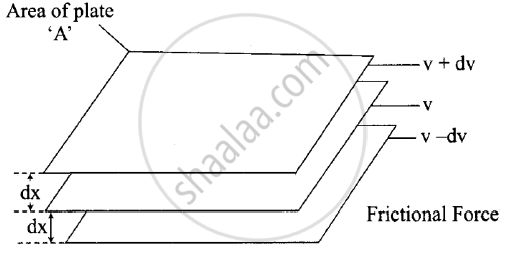Advertisements
Advertisements
Question
Explain the term ‘laminar flow’. Is the velocity of molecules same in all the layers in laminar flow? Explain your answer.
Solution
When a liquid flows over a fixed surface, the layer of molecules in the immediate contact of surface is stationary. The velocity of the upper layers increases as the distance of layers from the fixed layer increases.
This type of flow in which there is a regular gradation of velocity on passing from one layer to the next is called laminar flow.
In laminar flow, the velocity of molecules is not same in all the layers because every layer offers some resistance or friction to the layer immediately below it.
APPEARS IN
RELATED QUESTIONS
Which of the following property of water can be used to explain the spherical shape of rain droplets?
How does the surface tension of a liquid vary with increase in temperature?
The magnitude of surface tension of liquid depends on the attractive forces between the molecules. Arrange the following in increasing order of surface tension:
water, alcohol \[\ce{(C2H5OH)}\] and hexane \[\ce{[CH3(CH2)4CH3)]}\].
Name two phenomena that can be explained on the basis of surface tension.
Why does sharp glass edge become smooth on heating it upto its melting point in a flame? Explain which property of liquids is responsible for this phenomenon.
The following is a method to determine the surface tension of liquids:
